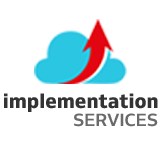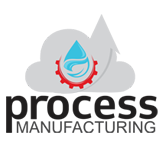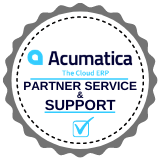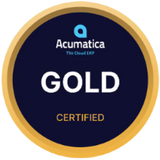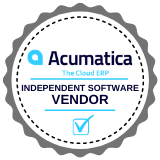The food manufacturing industry is critical in ensuring safe, high-quality food products that meet consumers’ ever-increasing demands. In this complex and highly regulated sector, implementing effective quality management systems is paramount to guaranteeing food products’ safety, consistency, and integrity. This article delves into food manufacturing quality management, exploring its significance, fundamental principles, and best practices.
Importance of Quality Management in Food Manufacturing:
Consumer Safety:
Ensuring the safety of food products is the foremost responsibility of food manufacturers. Robust quality management systems help identify and control potential hazards throughout production, mitigating contamination risks, allergens, microbial growth, and other dangers that can harm consumers.
Compliance with Regulations:
Food manufacturing quality management is closely tied to regulatory compliance. Strict adherence to local, regional, and international standards and regulations is necessary to meet legal requirements, prevent product recalls, protect brand reputation, and maintain consumer trust.
Consistency and Product Integrity:
Consistency is a crucial element in the food manufacturing industry. Quality management systems ensure that production processes are standardized, ingredients are sourced reliably, and product specifications are consistently met. It leads to producing high-quality food products that deliver the promised taste, texture, and nutritional value to consumers.
Fundamental Principles of Food Manufacturing Quality Management:
Hazard Analysis and Critical Control Points (HACCP):
HACCP is an organized approach to identifying, evaluating, and controlling hazards in food production. It involves conducting a thorough hazard analysis, identifying critical control points, implementing control measures, monitoring, and verifying their effectiveness. HACCP forms the foundation of any rich food manufacturing quality managing system.
Good Manufacturing Practices (GMP):
GMP outlines the primary operational and environmental conditions for food manufacturing facilities to produce safe, high-quality products. It covers facility design and maintenance, employee hygiene and training, equipment calibration, and sanitation practices.
Traceability and Recall Management:
Effective traceability systems enable food manufacturers to track the movement of ingredients and finished products throughout the supply chain. It facilitates efficient recall management in case of product defects, contamination, or non-compliance, minimizing the potential impact on consumer safety and brand reputation.
Continuous Improvement:
Food manufacturing quality management is an iterative process that requires ongoing evaluation and improvement. Implementing a culture of continuous improvement, supported by regular audits, data analysis, corrective actions, and employee training, helps enhance product quality, streamline processes, and stay ahead of evolving regulations and customer expectations.
Best Practices in Food Manufacturing Quality Management:
Supplier Quality Assurance:
Collaborating with reliable suppliers is essential for maintaining consistent product quality. Establishing supplier qualification programs, conducting audits, and implementing quality agreements help ensure that raw materials and ingredients meet specified quality standards.
Robust Document Control:
Maintaining accurate and up-to-date documentation is crucial for effective quality management. Standard operating procedures (SOPs), work instructions, specifications, and batch records should be well-documented, easily accessible, and regularly reviewed to ensure compliance and consistency.
Training and Competence Development:
Investing in employee training and competence development is vital for effective quality management. Providing comprehensive training programs on food safety, hygiene practices, quality control techniques, and regulatory compliance equips employees with the knowledge and skills required to uphold quality standards.
Utilization of Technology:
Leveraging technology solutions, such as electronic data management systems, laboratory automation, and real-time monitoring tools, can significantly enhance quality management in food manufacturing. These technologies enable faster data analysis, accurate tracking of production parameters, and timely identification of non-conformities, leading to proactive decision-making and improved quality control.
Conclusion: Food manufacturing quality management is a multifaceted discipline encompassing numerous principles and practices to ensure safe, consistent, high-quality food products. By embracing robust quality management systems, food manufacturers can effectively identify and control hazards, comply with regulations, maintain consistency, and protect consumer safety. In an industry where consumer trust and brand reputation are paramount, prioritizing quality management is necessary and strategic.
Acumatica ERP offers robust features and functionalities that can significantly enhance Food Manufacturing Quality Management. With its integrated approach, Acumatica provides a comprehensive solution for managing quality control processes throughout the production cycle.
The system enables real-time data capture and analysis, allowing manufacturers to monitor key quality parameters, track product specifications, and identify potential issues promptly.
Acumatica’s quality management module facilitates the implementation of industry-standard practices such as HACCP and GMP, enabling companies to establish and enforce standardized quality control procedures.
The system also supports effective supplier management, allowing manufacturers to monitor supplier performance, conduct audits, and consistently deliver high-quality raw materials. By utilizing Acumatica ERP, food manufacturers can streamline their quality management processes, improve compliance with regulations, reduce risks, and ultimately enhance their food products’ safety and quality.

Sangeetha brings 20 years of experience in Information Technology which includes Solution architecting, building micro services, research, and evaluation of business applications, integrating apps.





